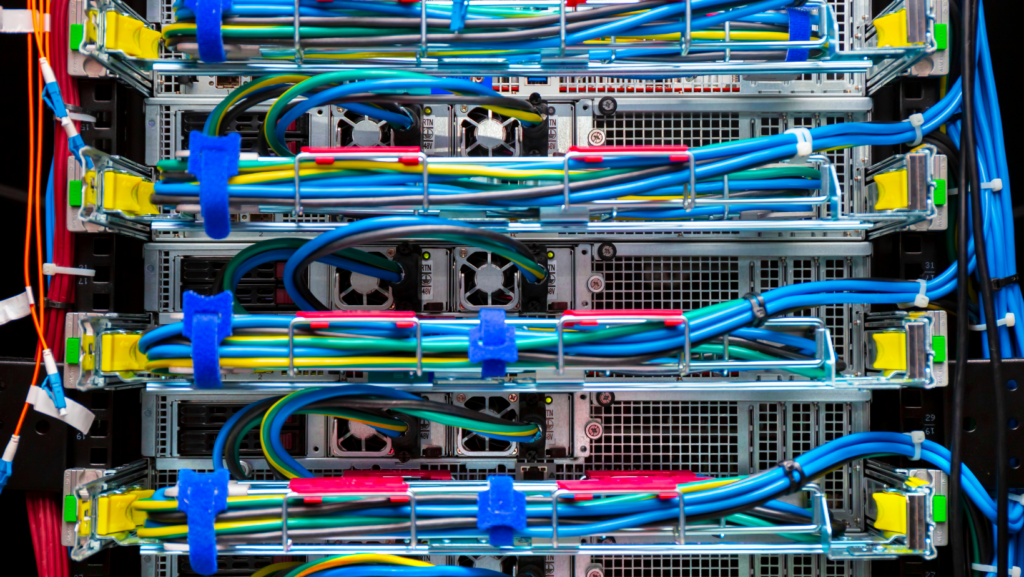In the bustling heart of any IT infrastructure lies the server room, a vital hub where countless cables connect to keep operations running smoothly. Yet, without effective cable management, this essential space can quickly descend into chaos. Tangled wires not only pose a safety hazard but also complicate troubleshooting and maintenance tasks, leading to costly downtime.
Proper server room cable management is more than just an aesthetic endeavor; it’s a critical component of efficient network performance. By organizing cables systematically, businesses can enhance airflow, reduce the risk of hardware failure, and ensure quick access for technicians. As technology continues to evolve, the demand for streamlined and scalable solutions becomes ever more pressing.
With the right strategies, companies can transform their server rooms into well-organized, high-functioning environments. This not only boosts productivity but also safeguards the integrity of valuable data, making cable management an indispensable practice in today’s digital age.
Server Room Cable Management

Server room cable management is essential to maintain a safe and efficient working environment. Properly organized cables create a clear pathway for technicians, reducing the risk of trips and falls. Tangled cables obstruct air circulation, leading to potential overheating and hardware failures. When cables are neatly arranged, airflow is optimized, safeguarding equipment from heat-related damage.
Efficient cable management simplifies troubleshooting and maintenance. Neatly labeled and separate cables allow technicians to identify connections quickly, reducing diagnostic times and minimizing network downtime. Complex networks benefit from structured cable systems as they support scalability, enabling easy integration of new devices without causing disruptions.
Planning Your Server Room Layout
Understanding Your Equipment Needs
Identifying and listing equipment helps determine space requirements. Include servers, switches, racks, and cooling systems. Note power needs and connectivity for each item. Anticipate potential future growth by estimating additional equipment.
Allocating Adequate Space
Design space allocation with all equipment dimensions in mind. Ensure enough room for technicians to access each component. Facilitate airflow by spacing racks and equipment appropriately. Consider potential expansion when planning area distribution to maintain effective cable management and equipment access.
Cable Management Best Practices

Effective server room cable management enhances the efficiency and safety of server rooms. With best practices, technicians streamline operations and reduce potential hazards.
Labeling And Documentation
Labeling cables simplifies troubleshooting and maintenance. Use clear, durable labels on both ends of each cable to ensure quick identification. Maintain up-to-date documentation, including diagrams and spreadsheets that map the entire network. This organized approach reduces errors and minimizes network downtime.
Using Cable Trays And Racks
Cable trays and racks offer structured pathways for cables. Vertical and horizontal trays, selected according to the server room layout, keep cables off the floor and easy to access. Racks with built-in cable management features minimize clutter and enhance airflow. Proper installation ensures cables are neatly routed and secured.
Ensuring Proper Cable Length
Using cables of appropriate length prevents tangling and clutter. Measure distances precisely and choose cable lengths that accommodate both initial and future connections. Excess cable coils can obstruct space and disrupt airflow, so technicians trim cables to fit the specific architecture of the server room.
Tools And Accessories For Cable Management

Cable ties and Velcro straps secure cables neatly and prevent tangling. Cable ties, typically made from nylon, offer a permanent solution for binding cables, useful for fixed setups. They’re available in various lengths and colors for easy identification. Velcro straps, in contrast, provide flexibility with their reusability and adjustability, making them ideal for frequently changing environments. Both tools help manage cable bundles and maintain organized pathways.
Patch panels and cable organizers facilitate structured cabling by providing central points for connection and management. Patch panels house multiple cable connections, allowing simple plug-and-play for network adjustments. They enhance troubleshooting by clearly delineating active connections. Cable organizers arrange cables along designated routes, accommodating airflow and preventing obstructions. These components support scalable systems by streamlining cable handling for future expansions.



